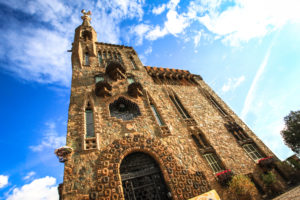
According to the legend, the famous bandit Joan de Serrallonga had spent the night in the remains of King Martin’s Palace in Bellesguard.
One of the most peculiar symbols of Bellesguard is the iron handle in the shape of a femur on the door of the stables.
To know the origin of such a peculiar symbol, we have to travel in time until 1634, the year that Serrallonga, the famous Catalan bandit, died. At this time, the walls of King Martin’s palace in Bellesguard remained in ruins, but, isolated from the city of Barcelona, they served as a perfect hiding place for a bandit.
Serrallonga docked different royal convoys with the tax money, which made it very popular among farmers. For years he mocked the authorities and his legend was growing among the population.

Gaudí designs a latch in the form of a femur in honor of Serrallonga and the possible remains of his walled body in the Bellesguard wall.
On the eve of All Saints Day of 1633, Serrallonga was caught and taken to Barcelona, where after suffering torment, he was condemned to the gallows on January 8, 1634. Once dead, his body was dismembered and his pieces distributed by the places that had frequented, by way of exemplary punishment.
According to legend, a piece of Serrallonga was exposed and sandwiched between the ruins of what had been King Martin’s Palace. The relationship between Bellesguard and Serrallonga remains mysterious and difficult to document, but historically the neighbors have called Bellesguard “the castle of Serrallonga”.
In 1900, Antoni Gaudí, a lover of popular legends and myths, gave him the form of a femur at the door handle of the stables of his tower in honor of Serrallonga, the famous catalan bandolero.




